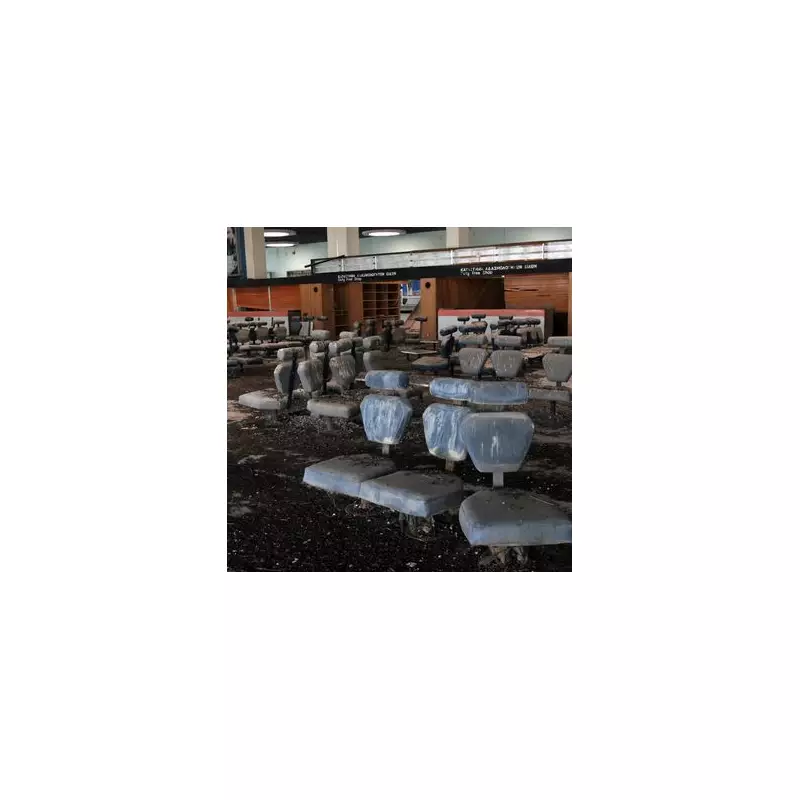
Eerie photographs have revealed the haunting remains of an airport frozen in time for nearly half a century, with decaying aircraft and terminals standing as silent witnesses to Cyprus's turbulent history.
From Thriving Hub to Battlefield
Nicosia International Airport, once the bustling main gateway to Cyprus, now sits abandoned and silent since the Turkish invasion of 1974. Originally constructed in the 1930s as an RAF station, the facility evolved into the island's primary civilian airport before conflict transformed it into a battlefield.
During the intense fighting that followed the invasion, the airport became a frontline position and suffered significant damage from bombing and combat. Although a ceasefire was eventually established, the damage had been done. The site was declared a United Nations Protected Area, with its perimeter forming part of the island's buffer zone between opposing forces.
A Time Capsule of Conflict
Commercial operations struggled to continue briefly after the conflict. In 1977, three Cyprus Airways planes that had been stranded on the tarmac were finally flown to safety thanks to intervention by British Airways engineers. However, the airport never recovered its former status and has remained largely untouched since, preserved as a time capsule of war.
Inside the terminal building today, rows of dusty chairs remain where travellers once waited for flights. Advertisement boards peeling from the walls still promote sun-drenched holidays to exotic destinations, their cheerful messages contrasting starkly with the decaying surroundings. The only sounds now come from pigeons nesting in the rafters, as nature gradually reclaims what was once a vibrant travel hub.
Outside on the runway, the skeletal remains of a Hawker Siddeley Trident aircraft stand as a monument to the airport's abrupt closure. The plane's engine parts show evidence of bullet damage and have been largely stripped over the decades.
Modern Uses and Digital Resurrection
Although regular passenger flights ceased in 1974 and no planes have arrived or departed since, the airport hasn't been completely forgotten. It now serves as the headquarters for the United Nations Peacekeeping Force in Cyprus (UNFICYP), and helicopters continue to use portions of the facility.
Public access remains strictly limited due to safety concerns and decades of neglect, meaning very few people ever witness the derelict halls in person. However, hope for revival flickered periodically over the years. During the 1990s and beyond, United Nations-facilitated discussions explored potentially reopening the airport, but political divisions consistently prevented any agreement from being reached.
Aleem Siddique, spokesperson for the United Nations peacekeeping force in Cyprus, confirmed the airport's suspended state to Reuters, noting that although several attempts were made to restore and rehabilitate the facility, the condition gradually deteriorated as no consensus could be reached.
Thanks to an innovative digital preservation project by the Cyprus Institute, the public can now experience the airport through virtual means. The "NIC Platform" enables users to explore offices, duty-free areas, and jetways—all preserved online in haunting detail.
One local resident who obtained special permission to enter described the emotional impact of visiting the frozen facility. "Being a local, and four years old when the invasion took place, I tell you, I was flooded with unfathomable emotions when I went in," he shared. "It's eerie. It's emotional. It's frustrating. It's sad. Believe me, your mind can make you hear the noise of a buzzing airport, passengers and planes and announcements and all. It's insane. This is a time freeze that should never have occurred."





